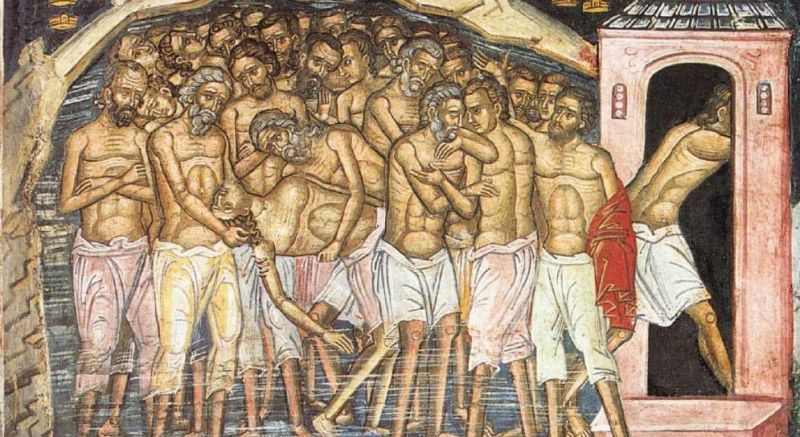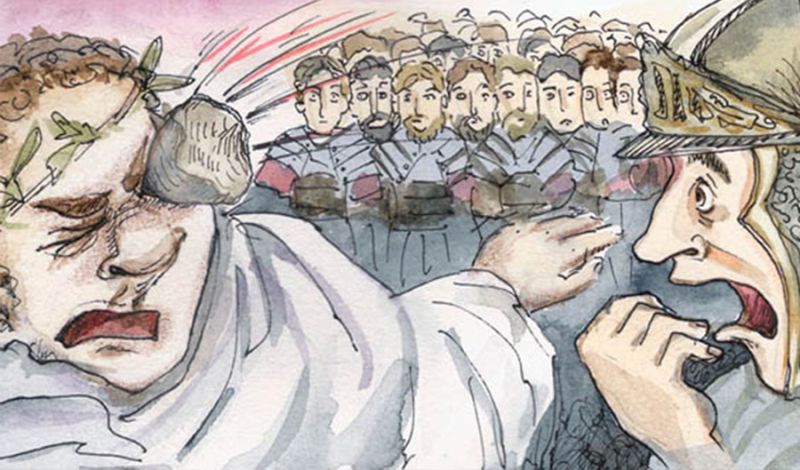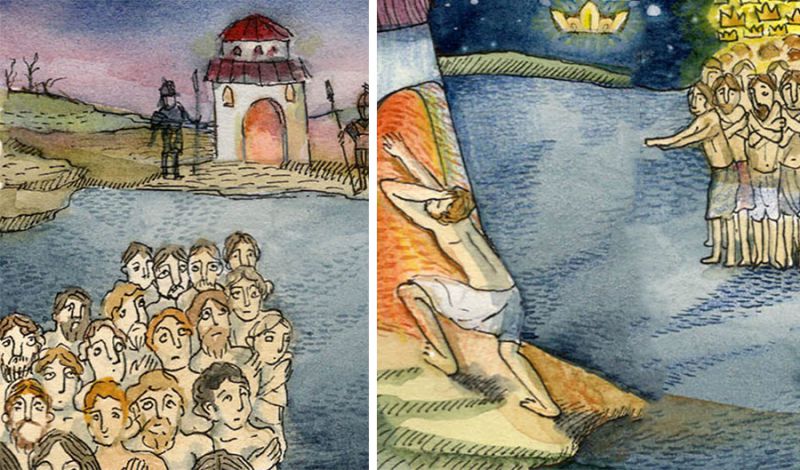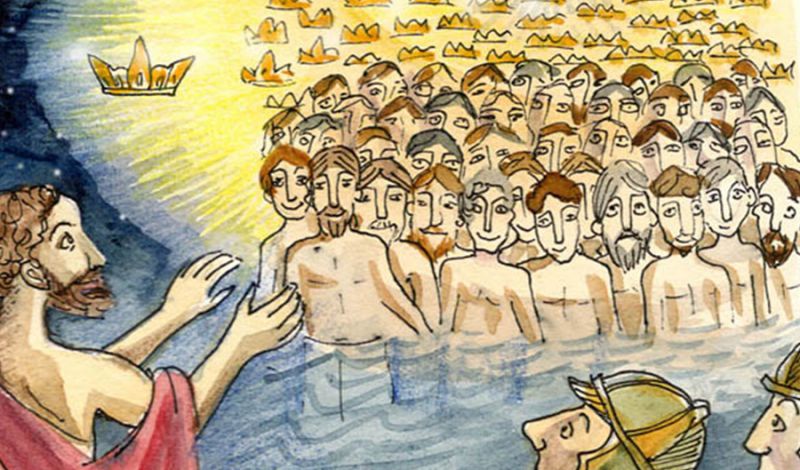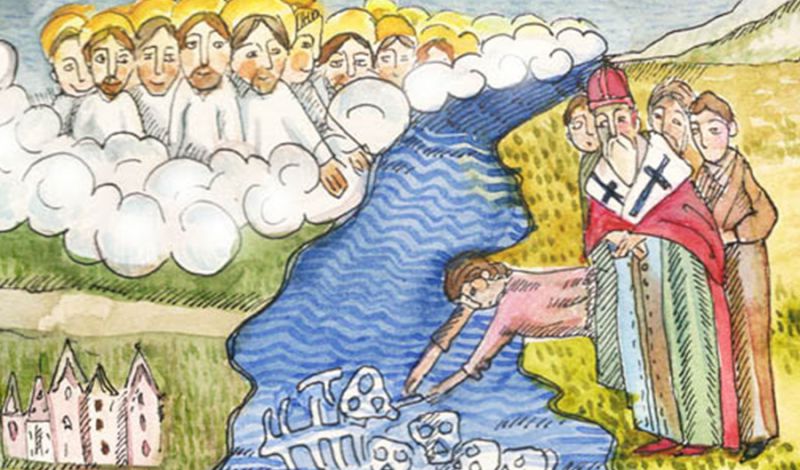|
Kontakte und Infos |
||
|
|
||
|
Wussten Sie schon ... |
||||||
|
||||||
Holy ascetics from Sevastia - the story of righteous legionnaires |
|
Many testimonies have been preserved about how believers fearlessly went to a terrible death for the sake of Jesus Christ, not wanting to give up the true religion and the Lord's word. Such actions are an example of courage, stability, firmness of spirit, and willpower, as well as selfless love for the Creator. And our article will tell you about one of these feats!
Tales and legends - the lives of the 40 martyrs of Sebastien These events took place in the IV century, already after the Milan Edict was signed. This decree on religious tolerance, issued in 313 by the Roman rulers Constantine and Licinius, proclaimed the equality of religions, providing Christians with the same rights as pagans. In addition, property taken during the persecution was returned to them. However, such laws were not always enforced. Many provincial governors continued to oppress and persecute believers, and sometimes even tortured them, forcing them to betray the Creator. This happened to the people described here. The righteous men who will be discussed were born in Cappadocia, but served in the legion located in the city of Sevastia (Minor Armenia, modern Turkey). In the annals of martyrology, their names are given: Agios, Aglais, Aetius, Acakius, Alexander, Athanasius, Valens, Valerius, Vivian, Gaius, Gorgonius, Domitian, Domnius, Eunoicus, Eutychius, Ecdykius, Ilianus, Ilias, Heraclius, Hesychius, Ivan, Candide, Cyril, Kyrion, Claudius, Xantius, Cudion, Leontius, Lysimachus, Meliton, Nicholas, Priscus, Sacerdon, Severian, Sisinius, Emerald, Theodulus, Theophilus, Phylyctimon, Flavius. The garrison was led by the commander Agricolas, who demanded from all subordinates that they make sacrifices to pagan idols. When the men did not agree to do this, the commander ordered them to be thrown into the dungeon. While there, the soldiers prayed fervently, and suddenly they heard a melodious voice that announced: "He who endures to the end will be saved!". This miracle strengthened the spirit of the martyrs - therefore, when they were brought to Agricola the next morning, the ascetics bravely endured both terrible threats and sweet flattery. Valiant warriors were not even tempted by the chance to win the favor of the ruler, giving up their faith in Jesus Christ for this. Enraged by yet another failure, the commander ordered the legionnaires to be chained. However, Kirion - the oldest of the soldiers - reprimanded the evil commander, noting that it is possible to put chains on soldiers only after receiving the appropriate order from the emperor. Embarrassed, Agricola sent the men to prison without chains.
They stayed there for another week, until the noble and wealthy dux (official) Lysias arrived in Sevasta. He took the righteous to court, trying in every way to shake their resolve, but they steadfastly answered: "Neither military ranks, nor our lives are more precious than the True God." In the end, the dignitary ordered the ascetics to be stoned, hoping that after that they would stop praising the Lord. But a miracle happened: all the blocks flew past the legionaries, and one of them, thrown by Lysias, wounded Agricola himself. Then the persecutors realized that the martyrs were protected by an invisible but powerful Creator, and, frightened by His power, again sent the soldiers to the gloomy dungeon. While in prison, the soldiers prayed fervently - and soon they heard the voice of an angel: "Those who believe in God, even if they die in the body, will be resurrected in the spirit. Dare and do not give in to fear, and you will receive the incorruptible crowns. Comforted by these words, the legionnaires remained steadfast, regardless of the trial and interrogations.
Seeing this, Lysias and Agricola came up with a new method of torture - they took the men to an ice-covered lake and ordered them to get out on it. They had to stand there all night, and in order to break the will of the ascetics, a bathhouse was melted down on the shore. Shortly before dawn, one of the soldiers couldn't stand it anymore, and ran to the building, which was sweltering with heat. However, the apostate did not even have time to step on the threshold - struck by God's punishment, he fell down and died. And then the Creator took pity on the martyrs - a beautiful light shone over them, and the air and water became much warmer. These events were witnessed by one of the guards who guarded the reservoir - Aglai. He saw thirty-nine radiant crowns above the heads of the men standing in the lake and understood that the forty-year-old soldier had not passed the test of asceticism. Then the legionnaire woke up his comrades, threw off his clothes, and, exclaiming: "I am a Christian!", joined the righteous. Together with them, he began to sing psalms and beg: "Lord God, in whom these people believe, join me with them, so that I may suffer with Your servants." All those present were amazed by the omnipotence of Jesus Christ, who saved his followers. However, neither Lysias nor Agricola showed an iota of condescension or pity. They ordered the soldiers to be taken out of the water and their legs to be broken. This was observed not only by other legionnaires, but also by relatives of the martyrs - yes, the mother of Meliton, the youngest of them, begged her son not to despair and humbly accept all the troubles that befell him. When the men were loaded onto the chariots, the woman herself carried her offspring, and as soon as the last breath left his lips, she laid him down with the holy companions. The bodies of the righteous were burned at the stake, and the bones were thrown into the water so that other believers could not bury them decently. However, God's providence continued to work - three days later forty Sebastien martyrs appeared in a dream to the local bishop Peter and said to him: "Come at night and carry us out." When the sky became cloudy, the priest and several virtuous men went to the lake - and made sure that the imperishable relics twinkled in the water like stars. Thanks to this, people were able to collect all the remains and place them near the temple altar.
Features of the legend - theological interpretation These events, which were mentioned in their sermons by Basil the Great, Gregory of Nyssa, and Ephrem the Syrian, teach Christians to rely on the Lord's will in everything. His grace gives strength to endure any poverty, hardship and obstacles, even those that seem to exceed human capabilities. An amazing light, which warmed the water and air around the warriors, emanated from their souls, purified by selfless asceticism. And so, patience, humility and firmness in faith can defeat any evil! However, trials are not always as scary as in the above story - much more often the devil tempts believers with small problems, worries, and sorrows. They do not demand either the obvious worship of Jesus Christ or the neglect of basic life principles, but every day they shake the moral foundations more and more, force them to sin and deviate from the commandments given by the Creator. Negligence, indifference and carelessness in such matters are the greatest threat to modern man. That is why the prayer to the 40 Sebastien Martyrs, supplemented by zealous repentance, participation in divine services, strict fasting and diligent performance of Christian duties, allows you to multiply the grace received during the sacraments of baptism, confession and communion. It saves from unbelief, apathy, grief, despair and sadness, brings peace, happiness and pacification, banishes unholy thoughts and destructive habits. Turning to ascetics, people find in themselves the determination to change something in life, choose the righteous path, make appropriate decisions in difficult situations. In front of the icon, which depicts Roman soldiers, they pray for the courage and bravery necessary to endure the most terrible troubles. Heavenly intercessors provide spiritual help to all who are in prison, suffering from persecution, insults, and ridicule. Wives of men who are on business trips and business trips for a long time can also contact them. And believers who received the same name at baptism are also under the patronage of martyrs - the saints will relentlessly accompany their wards, protecting them from dangers, illnesses and worries. In addition, this image symbolizes the readiness to defend one's beliefs and instill them in other people - children, relatives, friends and acquaintances. Only then will the light of true faith spread throughout the world, saving souls from doubts, suffering, and daily worries. Customs and traditions - how do you celebrate the day of remembrance of the 40 martyrs of Sebastien? This celebration falls on March 22 (according to the old style - March 9). In most ancient calendars, it belongs to the important and respected dates of the annual cycle. In particular, according to the Statute, on this day they perform the Liturgy of the Preconsecrated Gifts, recite a prayer with two canons and relax the strict Easter fast by feasting on oil and wine. There are also folk rites associated with the holiday. So, on March 9, special cakes - "larks" are made from yeast dough. They not only serve as a joyful reminder of nature, which is beginning to wake up from winter sleep, but also carry a deep spiritual meaning. While singing, the lark sometimes flies up, then suddenly falls down, allegorically embodying the desire of every person to enter the Heavenly Kingdom and the sadness that such bliss is unattainable for mortal flesh. That is why the humble gray-brown bird in Christianity is the personification of humility, meekness, the desire to glorify the goodness, mercy and omnipotence of God in every possible way. In addition, such figurines embody the souls of martyrs who ascended to the throne of Jesus Christ. |
|
Zimmer-Buchungsanfrage |
|||
|
|||
|
Veranstaltungstipps |
||||||
|
||||||
